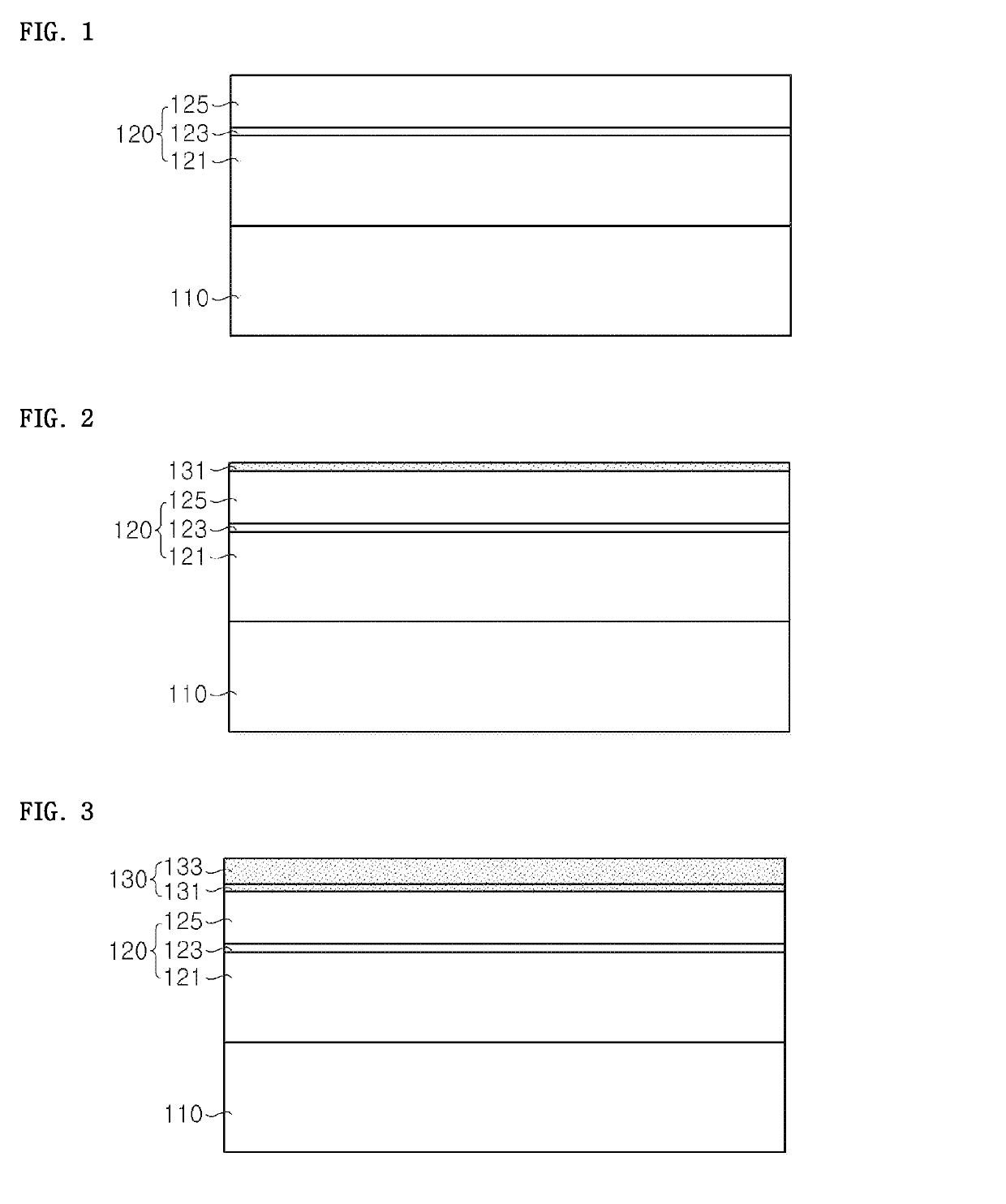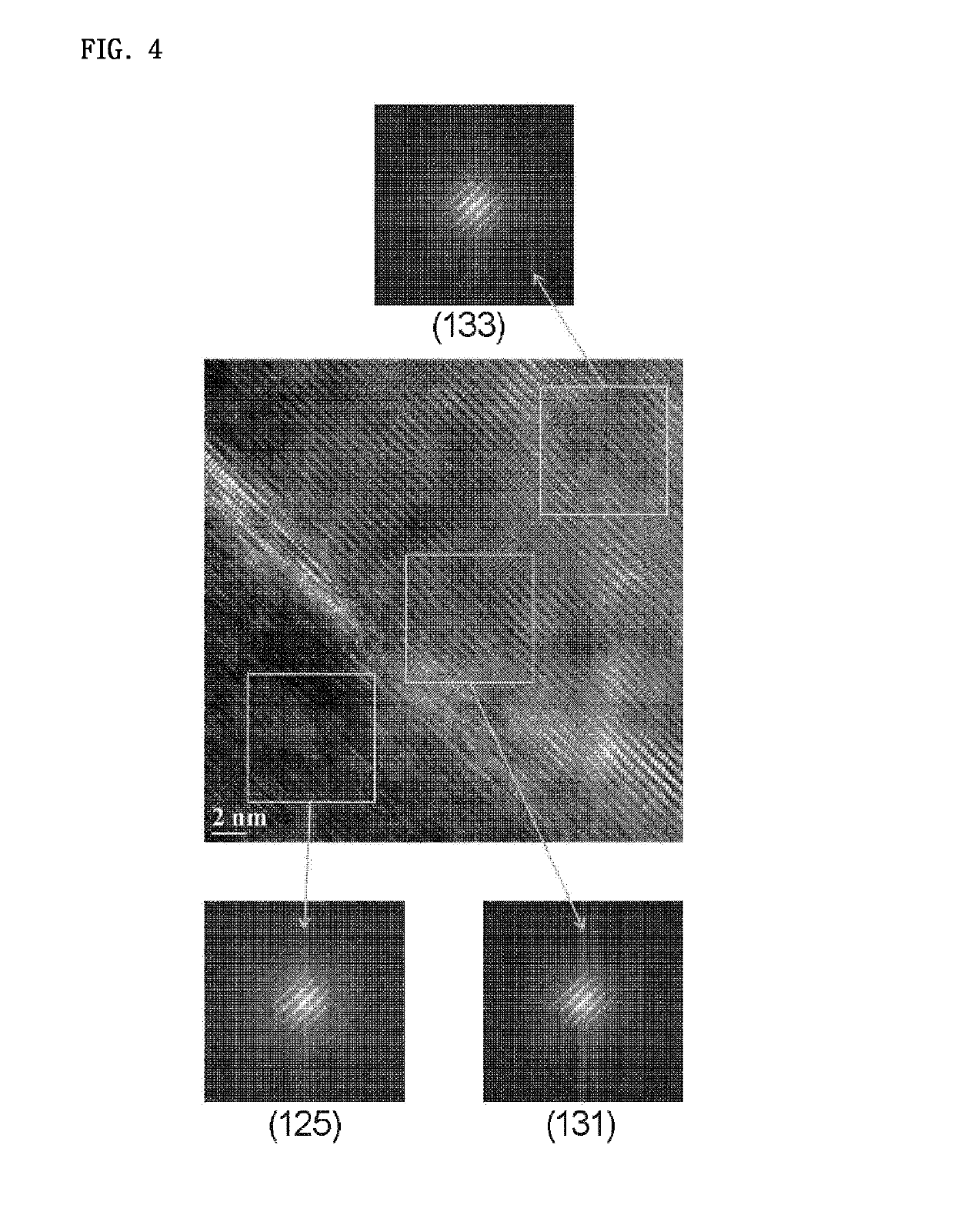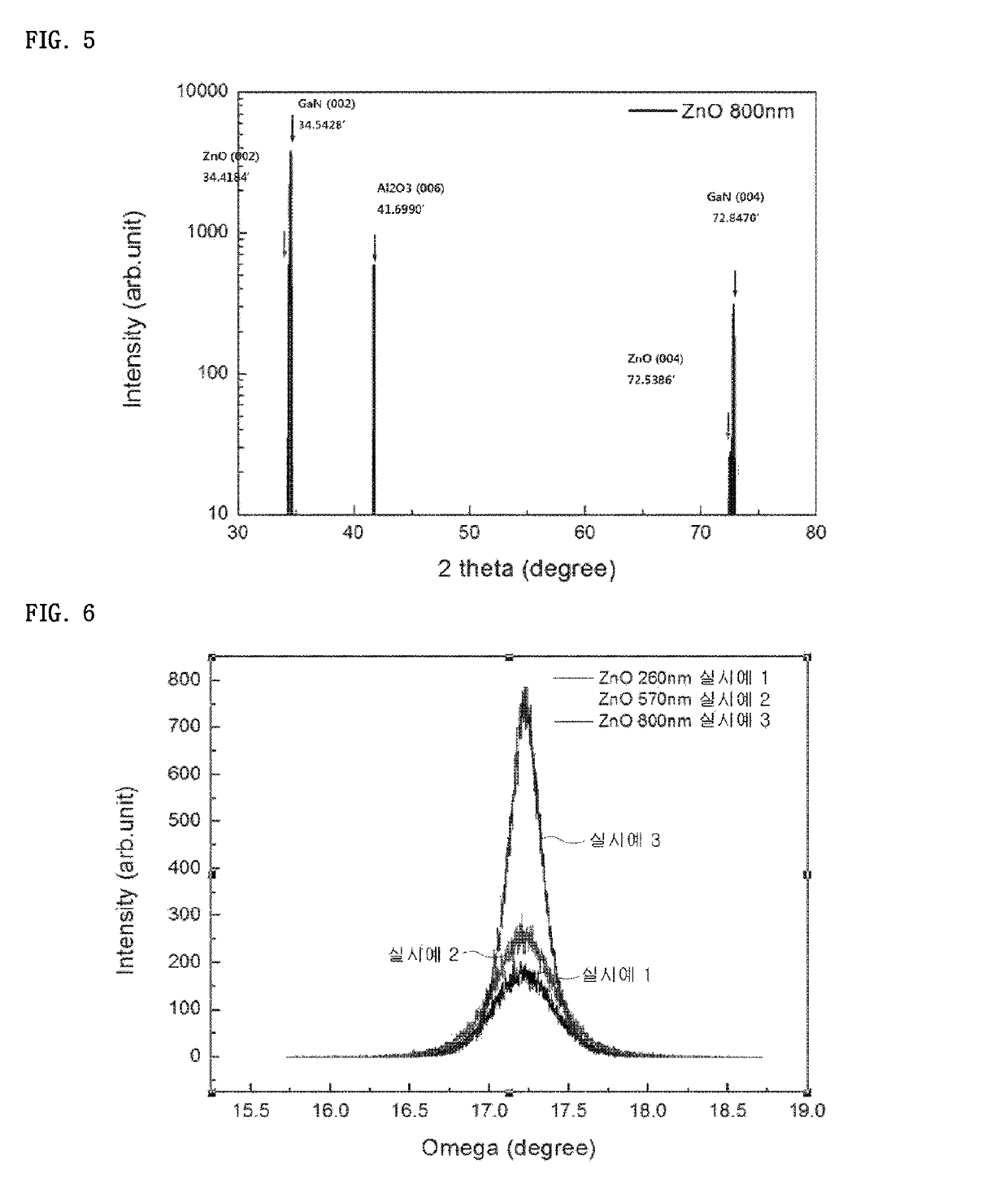Light-emitting element having ZnO transparent electrode and method for manufacturing same
a technology light-emitting element, which is applied in the direction of crystal growth process, polycrystalline material growth, instruments, etc., can solve the problems of current leakage and efficiency drooping, light-emitting diode can become susceptible to electrostatic discharge, and ito layer has a thickness limit, so as to improve the electrical characteristics of light-emitting diodes, improve the production yield of zno transparent electrodes, and improve the electrical contact characteristics
- Summary
- Abstract
- Description
- Claims
- Application Information
AI Technical Summary
Benefits of technology
Problems solved by technology
Method used
Image
Examples
Embodiment Construction
, the ZnO transparent electrodes 130 have thicknesses of 260 nm, 570 nm and 800 nm, respectively.
[0096]Referring to FIG. 6, as obtained by XRD ω scanning, the main peaks of the ZnO transparent electrode 130 of Example 1 may have a full width at half maximum of about 1,436 arc sec, the main peaks of the ZnO transparent electrode 130 of Example 2 may have a full width at half maximum of about 1,428 arc sec, and the main peaks of the ZnO transparent electrode 130 of Example 3 may have a full width at half maximum of about 869 arc sec. This result shows that, even when the thickness of the ZnO transparent electrode 130 increases from 260 nm to 570 nm, the full width at half maximum of the main peaks obtained by XRD ω scanning does not significantly decrease and crystallinity of the ZnO transparent electrode 130 does not significantly vary. On the contrary, when the thickness of the ZnO transparent electrode 130 increases from 570 nm to 800 nm, the full width at half maximum of the main ...
PUM
| Property | Measurement | Unit |
|---|---|---|
| thickness | aaaaa | aaaaa |
| thickness | aaaaa | aaaaa |
| thickness | aaaaa | aaaaa |
Abstract
Description
Claims
Application Information
 Login to View More
Login to View More - R&D
- Intellectual Property
- Life Sciences
- Materials
- Tech Scout
- Unparalleled Data Quality
- Higher Quality Content
- 60% Fewer Hallucinations
Browse by: Latest US Patents, China's latest patents, Technical Efficacy Thesaurus, Application Domain, Technology Topic, Popular Technical Reports.
© 2025 PatSnap. All rights reserved.Legal|Privacy policy|Modern Slavery Act Transparency Statement|Sitemap|About US| Contact US: help@patsnap.com



